Copyright 2009, 2014 by Marcel Brousseau, Nancy Hajeski, and Lisa Purcell All Rights Reserved. No part of this book may be reproduced in any manner without the express written consent of the publisher, except in the case of brief excerpts in critical reviews or articles. All inquiries should be addressed to Skyhorse Publishing, 307 West 36th Street, 11th Floor, New York, NY 10018. Skyhorse Publishing books may be purchased in bulk at special discounts for sales promotion, corporate gifts, fund-raising, or educational purposes. Special editions can also be created to specifications. For details, contact the Special Sales Department, Skyhorse Publishing, 307 West 36th Street, 11th Floor, New York, NY 10018 or .
Skyhorse and Skyhorse Publishing are registered trademarks of Skyhorse Publishing, Inc., a Delaware corporation. Visit our website at www.skyhorsepublishing.com. 10 9 8 7 6 5 4 3 2 1 Library of Congress Cataloging-in-Publication Data is available on file. Cover design by Brian Peterson Cover photo by Brian Peterson ISBN: 978-1-62914-209-8 EISBN: 978-1-62914-294-4 Printed in China  CONTENTS From punk and goth to devils and demons From fine art references to cartoon characters From swooping owls to floral fantasies From the few, the proud to the formerly incarcerated From Mom and Dad to the dearly departed FOREWORD A n intriguing medium with a limitless future, tattooing manages to be an art form as old as time and as modern as today. Tattoos have been found on the oldest preserved human remains, and today they adorn bodies in nearly every culture, all over the world. From the 1940s through the 1970s, tattooing was largely the territory of military and motorcycle subcultures.
CONTENTS From punk and goth to devils and demons From fine art references to cartoon characters From swooping owls to floral fantasies From the few, the proud to the formerly incarcerated From Mom and Dad to the dearly departed FOREWORD A n intriguing medium with a limitless future, tattooing manages to be an art form as old as time and as modern as today. Tattoos have been found on the oldest preserved human remains, and today they adorn bodies in nearly every culture, all over the world. From the 1940s through the 1970s, tattooing was largely the territory of military and motorcycle subcultures.
The familiar old sailor tattoos epitomized military tradition and the stereotyping of our men in service. The 1980s brought a bit more of a progression and broader availability of high-tech tattoo equipment. The 1990s saw the beginning of a tattoo renaissance. The introduction of tattoo magazines, the widening outreach of the Internet, and an increase in the number of tattoo conventions got the publics attention and brought this subculture into an ever-widening arena.  A tattoo rich with meaning. The subject noted that getting the koi swimming upstream represents a second chance that life has given me.
A tattoo rich with meaning. The subject noted that getting the koi swimming upstream represents a second chance that life has given me.
Subject: Tran / Artist: Troy Timpel  After a bike wreck and three months in a coma, the subject chose a tattoo signifying the brush with death and the fight back to consciousness. Subject: Morgan Deegan / Artist: Troy Timpel The new players in this tattoo rebirth were mostly art school educated, and they started to push the boundaries. Japanese-style tattooing and various tribal patterns were soon commonplace motifs within the tattoo scene. The new information age awoke interest in both old and new styles of artwork to accommodate the bursting envelope of how to define body art.
After a bike wreck and three months in a coma, the subject chose a tattoo signifying the brush with death and the fight back to consciousness. Subject: Morgan Deegan / Artist: Troy Timpel The new players in this tattoo rebirth were mostly art school educated, and they started to push the boundaries. Japanese-style tattooing and various tribal patterns were soon commonplace motifs within the tattoo scene. The new information age awoke interest in both old and new styles of artwork to accommodate the bursting envelope of how to define body art.  A touching tribute to a lost friend. Tattoo artist Troy Timpel fashioned this intricate pattern for a client who wanted to mix the paw prints of his recently passed-away boxer dog in this large Japanese floral piece.
A touching tribute to a lost friend. Tattoo artist Troy Timpel fashioned this intricate pattern for a client who wanted to mix the paw prints of his recently passed-away boxer dog in this large Japanese floral piece.
Subject: Josh / Artist: Troy Timpel All photographs this page by Troy Timpel Portrait and photorealistic black and gray started to show some of tattooings true potential. Large-scale tattooing soon became a common sight on an increasing number of individuals. The end of the 1990s saw no stone left unturned. Full bodysuits, mastery of technique, and a flood of equipment developments made tattooing very popular among a huge cross-section of our population. I started tattooing in 1991, after attending the Milwaukee Institute of Art and Design. I had the pleasure of spending fifteen years (at the time of this books publication) of tattooing with Philadelphia Eddie.
Eddie was a key figure in the development of the tattoo scene from the 1960s to the present. Working with such a legend in the field gave me a true love and understanding of the tatttoo business. In 1998 I started a tattoo clothing and promotional company called tattooedkingpin.com. We manufacture clothing, accessories, jewelry, and limited edition books. In 2003 we started running the Philadelphia Tattoo Arts Convention. I have since expanded the tattoo convention circuit to include Baltimore, Milwaukee, and Chicago.
The tattoo scene has exploded around me, and it is great to see the worldwide embrace of what was once a small tight-knit subculture. Television documentaries and reality shows have given the public an eyeful, providing educational content about this growing art form. I recently had the pleasure of appearing on the History Channel show The Works. This book showcases striking tattoo photos and actual quotes from a broad spectrum of real subjects. Im happy to be part of this projectits given me a meaningful glimpse into peoples personal feelings about their tattoos. Troy Timpel  An ancient human art, both stigmatized and celebrated throughout history, tattooing is more popular today than at any time in recent memory.
An ancient human art, both stigmatized and celebrated throughout history, tattooing is more popular today than at any time in recent memory.
This expansive tattoo embodies a new chapter in a long history. Though tribal in nature, like ancient Polynesian tattoos, it was presumably not done for ritual purposes, but instead it satisfies the wearers vision of himself. It has ancient precedents but a fully modern conception and execution. Subject: Seven / Artist: Mony AN ANCIENT ART REBORN I n the autumn of 1691, the mysteriously exotic Prince Giolo of the island of Moangis first displayed his patterned body to the learned virtuosi and persons of high quality inhabiting smoky, crowded, turn-of-the-century London. A South Sea Islander enslaved in the Philippines and eventually sold to a British merchant sailor, Prince Giolo was trumpeted as the wonder of the age for the intricate and colorful tattooing that decorated the entirety of his torso and legs. A promotional broadsheet for the Painted Prince speculated upon the wisdom and ancient learning embodied by the mans tattoos and claimed that the magical ink rendered his skin impervious to snakebite or poison.
Despite his apparent powers, the ornately ornamented prince could not withstand the ravages of smallpox, and he died within months of arriving in London. Nearly eighty years later, Joseph Banks, Captain James Cooks naturalist, made the first record of Polynesian tattooing practices during the HMS Endeavor s maiden voyage to the South Pacific. To accompany his scientific observations, Banks, along with other members of Cooks crew, submitted his own skin to the Polynesian tattooists whims and sailed home forever marked. Upon the vessels return to Great Britain, the tales and drawings of the tattooed inhabitants of the South Seas captivated British society much as the ill-fated Prince Giolo had eighty years earlier, and body art became a small-scale fad among both well-heeled Britons and, of course, sailors. 

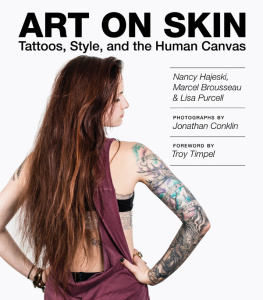
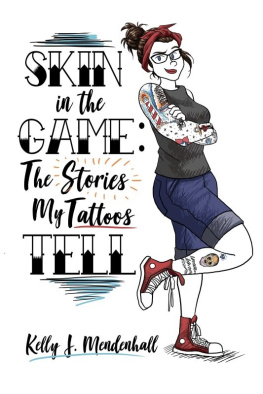

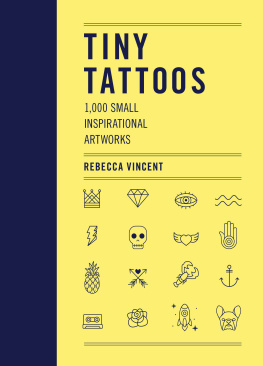

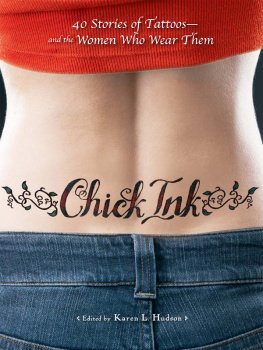


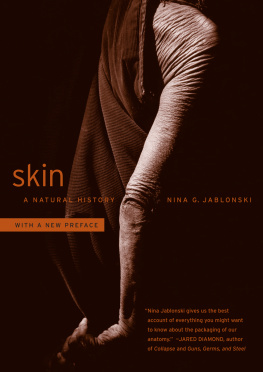
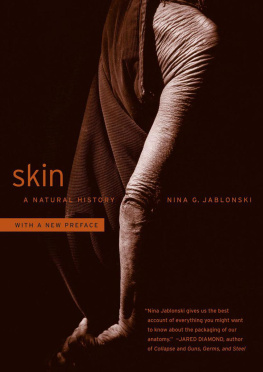
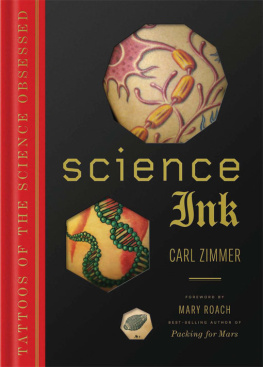


 CONTENTS From punk and goth to devils and demons From fine art references to cartoon characters From swooping owls to floral fantasies From the few, the proud to the formerly incarcerated From Mom and Dad to the dearly departed FOREWORD A n intriguing medium with a limitless future, tattooing manages to be an art form as old as time and as modern as today. Tattoos have been found on the oldest preserved human remains, and today they adorn bodies in nearly every culture, all over the world. From the 1940s through the 1970s, tattooing was largely the territory of military and motorcycle subcultures.
CONTENTS From punk and goth to devils and demons From fine art references to cartoon characters From swooping owls to floral fantasies From the few, the proud to the formerly incarcerated From Mom and Dad to the dearly departed FOREWORD A n intriguing medium with a limitless future, tattooing manages to be an art form as old as time and as modern as today. Tattoos have been found on the oldest preserved human remains, and today they adorn bodies in nearly every culture, all over the world. From the 1940s through the 1970s, tattooing was largely the territory of military and motorcycle subcultures. A tattoo rich with meaning. The subject noted that getting the koi swimming upstream represents a second chance that life has given me.
A tattoo rich with meaning. The subject noted that getting the koi swimming upstream represents a second chance that life has given me. After a bike wreck and three months in a coma, the subject chose a tattoo signifying the brush with death and the fight back to consciousness. Subject: Morgan Deegan / Artist: Troy Timpel The new players in this tattoo rebirth were mostly art school educated, and they started to push the boundaries. Japanese-style tattooing and various tribal patterns were soon commonplace motifs within the tattoo scene. The new information age awoke interest in both old and new styles of artwork to accommodate the bursting envelope of how to define body art.
After a bike wreck and three months in a coma, the subject chose a tattoo signifying the brush with death and the fight back to consciousness. Subject: Morgan Deegan / Artist: Troy Timpel The new players in this tattoo rebirth were mostly art school educated, and they started to push the boundaries. Japanese-style tattooing and various tribal patterns were soon commonplace motifs within the tattoo scene. The new information age awoke interest in both old and new styles of artwork to accommodate the bursting envelope of how to define body art.  A touching tribute to a lost friend. Tattoo artist Troy Timpel fashioned this intricate pattern for a client who wanted to mix the paw prints of his recently passed-away boxer dog in this large Japanese floral piece.
A touching tribute to a lost friend. Tattoo artist Troy Timpel fashioned this intricate pattern for a client who wanted to mix the paw prints of his recently passed-away boxer dog in this large Japanese floral piece. An ancient human art, both stigmatized and celebrated throughout history, tattooing is more popular today than at any time in recent memory.
An ancient human art, both stigmatized and celebrated throughout history, tattooing is more popular today than at any time in recent memory.